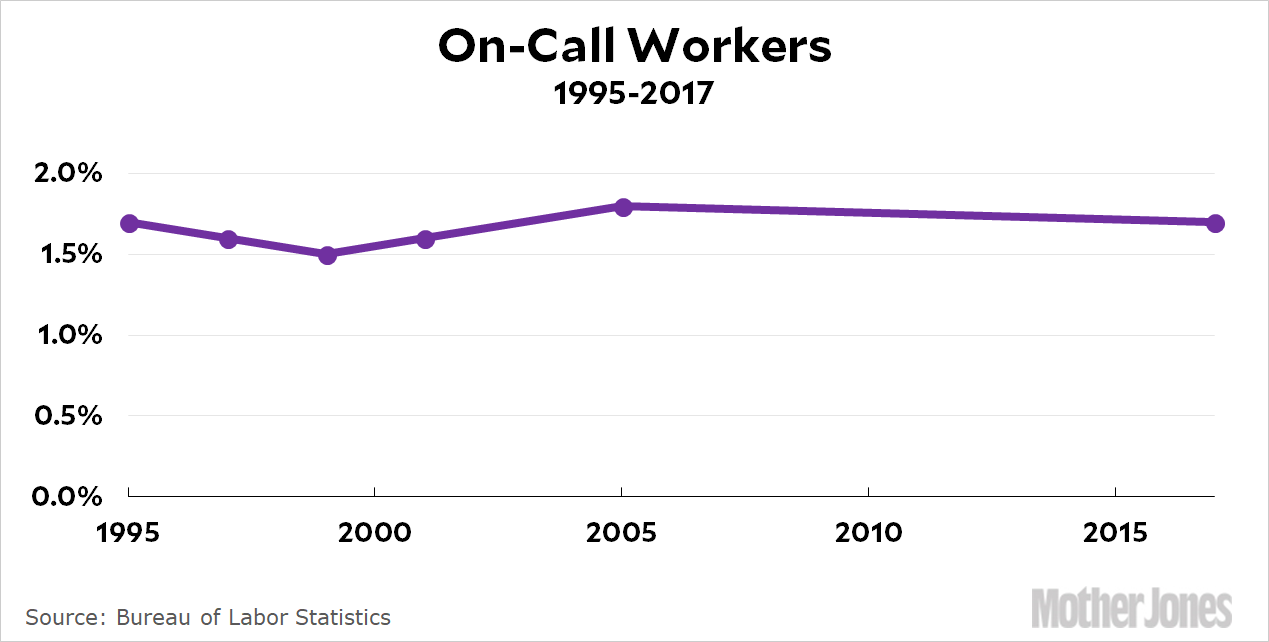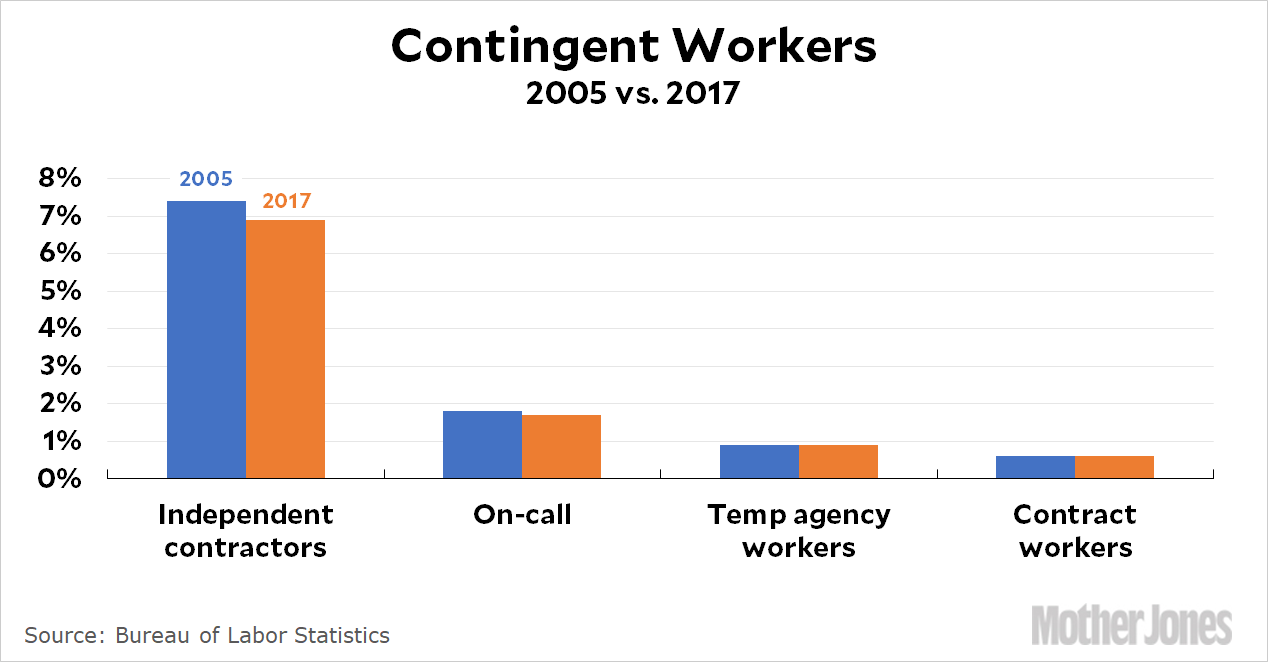The Bureau of Labor Statistics used to perform a contingent worker survey every couple of years, but they stopped doing it after 2005. Last year they started up again, which gives us a look at how the gig economy has grown since then. The closest category they have to “gig worker” is people who are on call for sporadic work, which looks like this:

In a nutshell, nothing has changed. Uber drivers might get notified of work via an app instead of a phone call, but that’s about it.
The BLS has several other definitions of contingent workers, but they don’t make any difference. No matter how you define it, contingent work hasn’t changed much since 2005:

Any way you slice it, the gig economy just isn’t a thing: it’s not large and it’s not growing. In fact, since Uber accounted for half these jobs in 2017 but none of them in 2005, it’s very likely that the non-Uber gig market has declined considerably over the past decade. The vast, vast majority of people want steady work, the same as they always have.


















